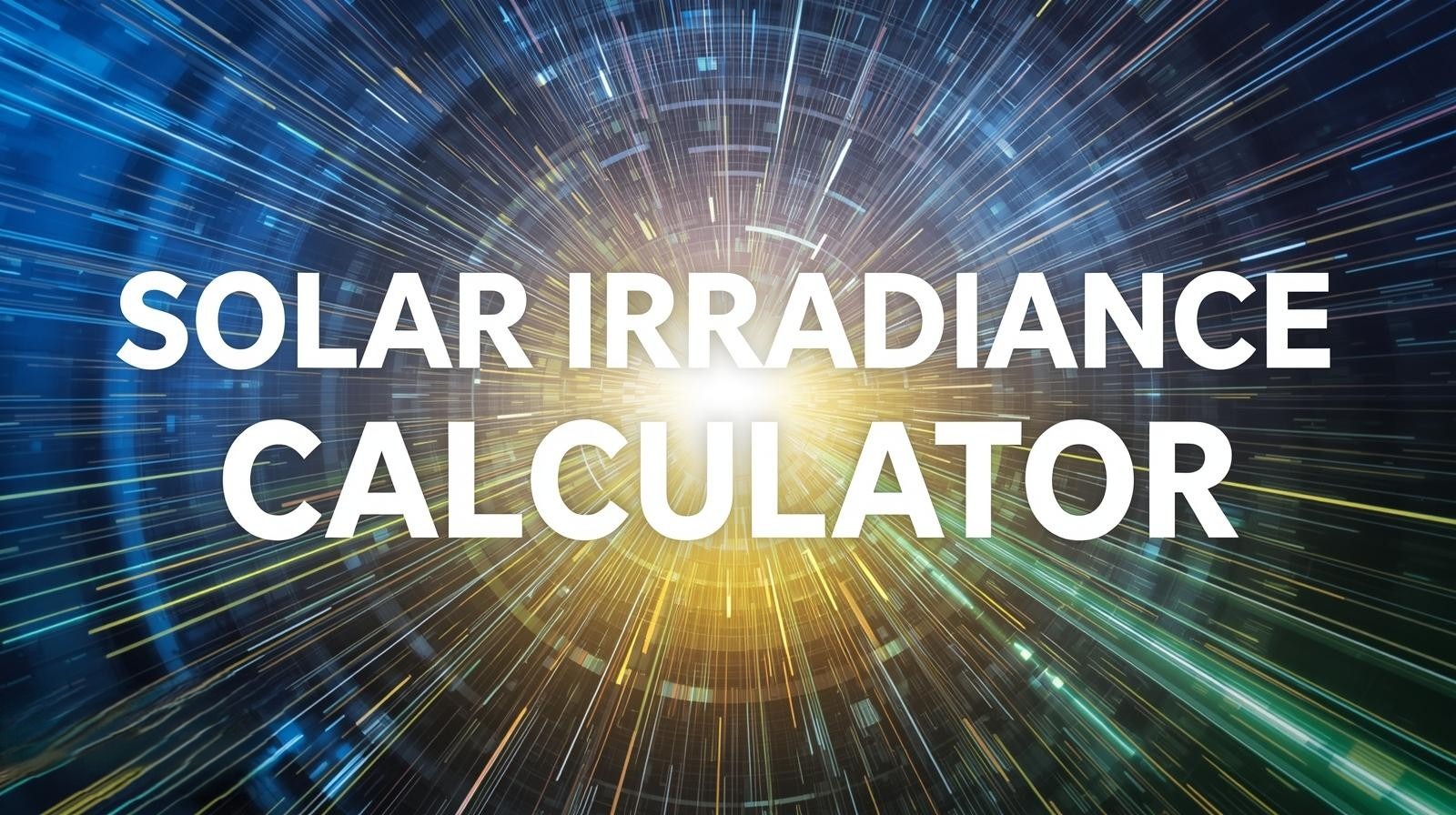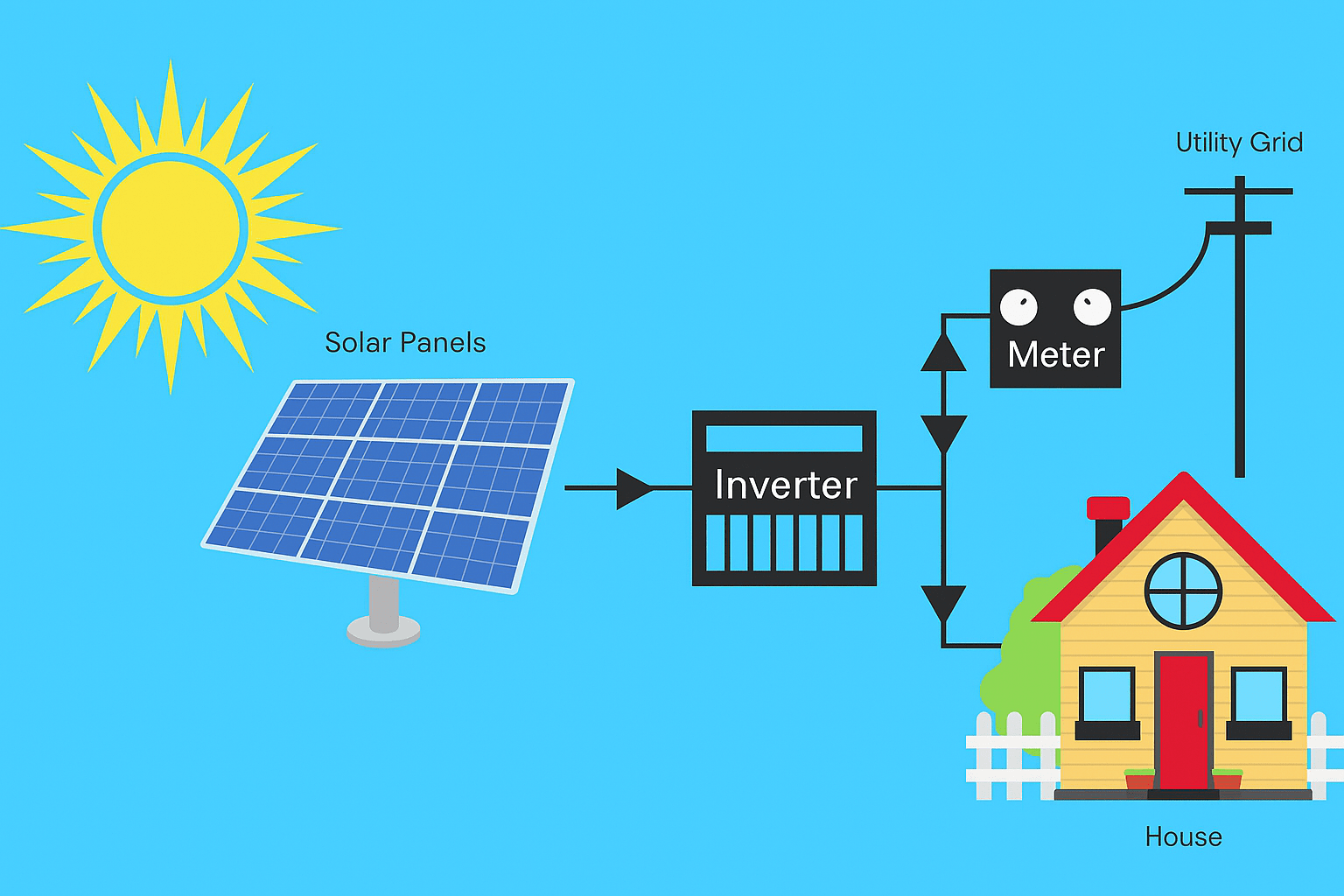When planning a solar installation, one of the most important factors to consider is solar irradiance — the amount of sunlight energy available at a specific location.
Whether you’re a homeowner exploring rooftop solar or a solar professional designing large-scale projects, understanding how to calculate solar irradiance is essential for accurate energy yield estimation and system performance forecasting.
What Is Solar Irradiance?
Solar irradiance refers to the power of solar radiation per unit area, usually measured in watts per square meter (W/m²).
It represents the instantaneous solar energy received on a surface and varies throughout the day based on weather, time, and geographic location.
• High irradiance = More sunlight → More potential electricity generation
• Low irradiance = Cloudy or shaded conditions → Less solar output
There are three main components of irradiance:
1. Direct Normal Irradiance (DNI): Sunlight received directly without scattering (used for tracking systems).
2. Diffuse Horizontal Irradiance (DHI): Sunlight scattered by clouds and atmosphere.
3. Global Horizontal Irradiance (GHI): Total sunlight received on a horizontal surface (DNI + DHI component).
Why Solar Irradiance Matters:
Solar irradiance directly impacts:
• Solar panel efficiency
• Energy generation forecasts
• System design & tilt angle decisions
• Financial projections (ROI, payback period)
Without accurate irradiance data, even a perfectly engineered solar system can underperform.
How to Calculate Solar Irradiance:
Solar irradiance can be measured directly using pyranometers and pyrheliometers, or estimated using formulas and data from satellite databases such as NASA SSE, PVGIS, or NREL’s Solar Resource Data.
Step-by-Step Calculation Example:
Let’s assume you want to estimate the Global Horizontal Irradiance (GHI) for your location.
Formula:
GHI = DNI × cos(θz) + DHI
Where:
DNI = Direct Normal Irradiance (W/m²)
DHI = Diffuse Horizontal Irradiance (W/m²)
θz (theta z) = Solar zenith angle (angle between the sun and the vertical)
Step 1: Obtain Solar Radiation Data
You can get DNI and DHI values from reliable data sources:
• NREL’s National Solar Radiation Database (NSRDB)
• PVGIS (Europe & Asia)
• NASA POWER Data Access Viewer
Step 2: Calculate Solar Zenith Angle (θz)
The solar zenith angle depends on location, date, and time. It can be calculated as:
cos(θz) = sin(ϕ) × sin(δ) + cos(ϕ) × cos(δ) × cos(h)
Where:
φ (phi) = Latitude of the location
δ (delta) = Solar declination angle (varies by day of the year)
h = Hour angle (based on time of day)
Step 3: Plug in the Values
Let’s take an example of Delhi, India:
• DNI = 650 W/m²
• DHI = 120 W/m²
• θz = 30°
GHI = 650 × cos(30°) + 120
GHI = 650 × 0.866 + 120 = 683W/m2
Factors Affecting Solar Irradiance:
1. Geographical Location: Equatorial regions receive more consistent irradiance.
2. Time of Year: Summer months have higher irradiance due to sun angle and daylight duration.
3. Weather Conditions: Clouds, humidity, and air pollution reduce irradiance.
4. Tilt Angle & Orientation: Optimal panel tilt maximizes energy absorption.
5. Shading: Trees, buildings, or dust on panels can drastically reduce effective irradiance.
Conclusion:
Understanding and calculating solar irradiance is the foundation of any successful solar project. With proper data, you can design systems that maximize output, improve efficiency, and deliver reliable performance.
Whether you’re an engineer or an energy-conscious homeowner, learning how to evaluate solar irradiance ensures your system captures every possible ray of sunlight.




